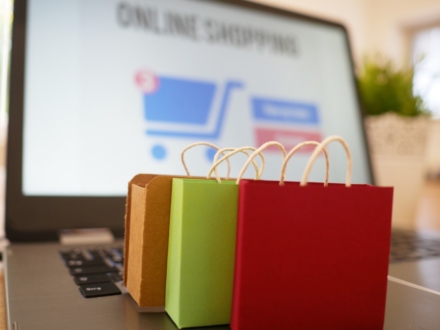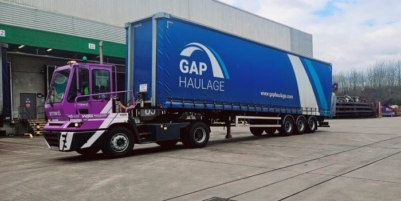-
Nutrivend selects Forterro’s Orderwise to support online expansion and streamline operations - April 11, 2025
-
ARROWXL LAUNCHES AMBITIOUS ZERO WASTE ROADMAP - April 8, 2025
-
THE BCMPA’S NEW CAMPAIGN DRIVES OUTSOURCING SUCCESS IN Q1 - April 7, 2025
-
BLACKOUT TECHNOLOGIES TARGETS TELEMATICS-INTEGRATED MOBILE DEVICE BLOCKING TO COMBAT SMARTPHONE DISTRACTION - April 1, 2025
-
OpenADR Alliance announces first OpenADR 3.0 certified products with EVoke Systems, E.ON Energy and Universal Devices - March 25, 2025
-
Growing fulfilment and contract packer appoints new Managing Director - March 25, 2025
-
When is it time to invest in a WMS? Understanding the key trigger points - March 25, 2025
-
eCapital helps Vantage Recruitment on its journey to financial success - March 24, 2025
-
Hugo Beck Celebrates 70 Years of Packaging Innovation with Open House Events - March 20, 2025
-
PROLOG FULFILMENT SUPPORTS LUNA DAILY’S COMMITMENT TO BETTER BODY CARE FOR ALL WOMEN - March 19, 2025
Author: Karl Lauri
Direct to Consumer (D2C) is a new yet already popular business strategy for many new, and some experienced small manufacturers. But without an appropriate IT platform, which combines traditional manufacturing ERP with new e-commerce channels, the benefits may not be entirely realised.
The disabling of many conventional wholesale/retail market channels during the Covid lockdown has prompted many brand-owning manufacturers to bring forward plans to build Direct to Consumer (D2C) channels.
This trend was already in evidence as manufacturers try to assert greater control over their relationship with consumers, and to capture a greater share of gross margin. The move to D2C is scale-free: at one extreme are micro-manufacturers, who have perhaps converted a hobby into an income stream with a CAD programme and a 3D printer in their garden shed. But D2C is also attracting interest from major brand owners. A study by the Centre for Supply Chain Management at Cranfield found that 48% of major companies are already building D2C channels. But for once, the technology really is living up to the promise of levelling the playing field for smaller competitors.

D2C is not a panacea and potential downsides include the risk of impairing relationships in the established retail chain, which remains important. But the advantages of ‘taking back control’ through D2C, can be summarised as gaining a better understanding of the end-user; fuller control over the end-user experience (from product design through marketing to post-purchase service); gaining a larger audience/market share; avoiding being sold alongside competitors (possibly avoiding a ‘bidding war’ to gain retail shelf space – a war which favours the big brands); the ability to create a platform for up to date information – which products, prices, promotions, availability – direct to the potential buyer; and generally to offer a ‘better, more authentic, brand experience’.
Crucially, D2C gives the manufacturer/brand owner direct access to vital data that otherwise may be yielded late, reluctantly, or not at all by wholesale and retail partners.
D2C is not, of course, a single solution. If you already have a trade counter or shop at your factory, you could be said to be D2C. But really, we are talking e-commerce, websites, and, increasingly, social media. Quite how ‘direct’ to consumer physical operations actually are can vary: a manufacturer could do everything in-house; or contract with a 3PL for fulfilment; or use marketplaces such as Amazon in a number of ways, from mere market exposure to a full logistics service. The e-commerce platform space is ‘hot’ and for good reason: according to the UK e-commerce 2020 study by eMarketer, the post-pandemic hit to the high street is set to continue into the future. It finds that UK retail ecommerce sales will account for 27.5% of total retail sales in 2020, and that proportion will approach one-third by 2024.
But, and it is a big ‘but’, in all of this discussion of customers, marketing and fulfilment, there is rarely if ever any reference to how the D2C business model feeds back to and changes manufacturing and the upstream supply chain. This is concerning because entering the D2C arena is likely to disrupt the way manufacturing operates quite profoundly, and existing systems – which for smaller manufacturers may be quite rudimentary – are likely to fall short of requirements with potentially severe results.
D2C is inherently more volatile. Business is based on a multitude of individual live orders. D2C means the manufacturer has to take responsibility for many issues previously the territory of the retailer. In terms of inventory levels: a retailer commits to a given number of units in the next month or quarter, giving a vaguely stable base line for manufacturing and the upstream supply chain; if however sales are slow, that is in the first instance the retailer’s problem. With D2C, the manufacturer only knows what is selling right now and must make their own judgements on manufacturing and inventory volumes.
Few firms fully appreciate the impacts, positive and negative, of social media. The ‘influencer’ effect is profound – some are paid, some are fortuitous, but a comment by an influential poster can drive sales up, or down, in microseconds.
There are other exposures. Consider returns, averaging around 20% of ‘sales’ across e-commerce, and well over 30% in some sectors. Under D2C, that is no longer a retailer problem – it is the manufacturer’s. Efficiently returning that stock to ‘goods for sale file’ reduces the quantity of new product required, but paradoxically, to the extent that returned goods need repackaging, the requirement for packing operations and materials may actually increase.
And those are the simple cases – we haven’t begun to discuss the clever things that the manufacturing brand owner ought to be doing with all that suddenly available customer data. What about analysing uncompleted sales – ‘basket abandoned’? Is that a price thing, an availability issue, a lack of delivery slots, an issue with the product, a more attractive competitor offer or a social media rumour of unethical labour upstream?
All this stuff becomes, under D2C, the manufacturer’s responsibility, and it impacts on manufacturing and the upstream supply chain. We need fast, flexible, control and co-ordination of those processes, the ability to re-plan and reschedule in real time, and that means some sort of ERP system.
‘Classic’ enterprise systems from the likes of SAP and Oracle are more suited to multinational companies than an SME with constraints on access to financial and human capital. However, it is often the case that ‘cheap and cheerful’ solutions at the other end of the scale amount to little more than enabling one spreadsheet to talk to another.
A system such as MRPeasy is designed to be both different, and particularly suited to the requirements of SMEs who need to develop D2C in parallel with their existing channels. This cloud-based system, available as SaaS, is readily scalable upwards or downwards – both functionally and commercially – and is configurable to the needs of individual businesses. Comprehensive support can be provided, although this can usually be achieved by in-house. Initial investment and training requirements are modest, and operation is graphic, intuitive, and importantly ‘feels’ like the real business.
Crucially for firms contemplating D2C, MRPeasy already has fully-functioning integrations with major and international platforms such as Shopify, Magento (now owned by Adobe), WooCommerce and BigCommerce, while integration with Amazon is at an advanced stage of development. For more information, visit www.mrpeasy.com
Author: Karl H. Lauri, managing team member at MRPeasy.com. MRPeasy.com is a cloud-based, affordable and user-friendly, ERP/MRP software for small manufacturers and distributors (10-200 employees).

































